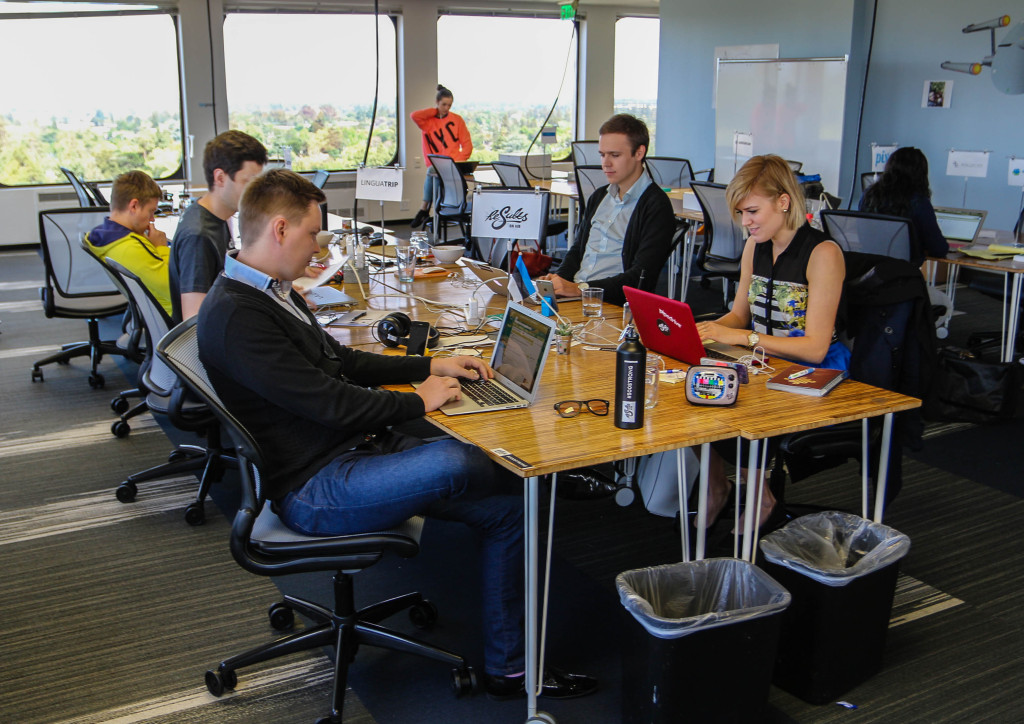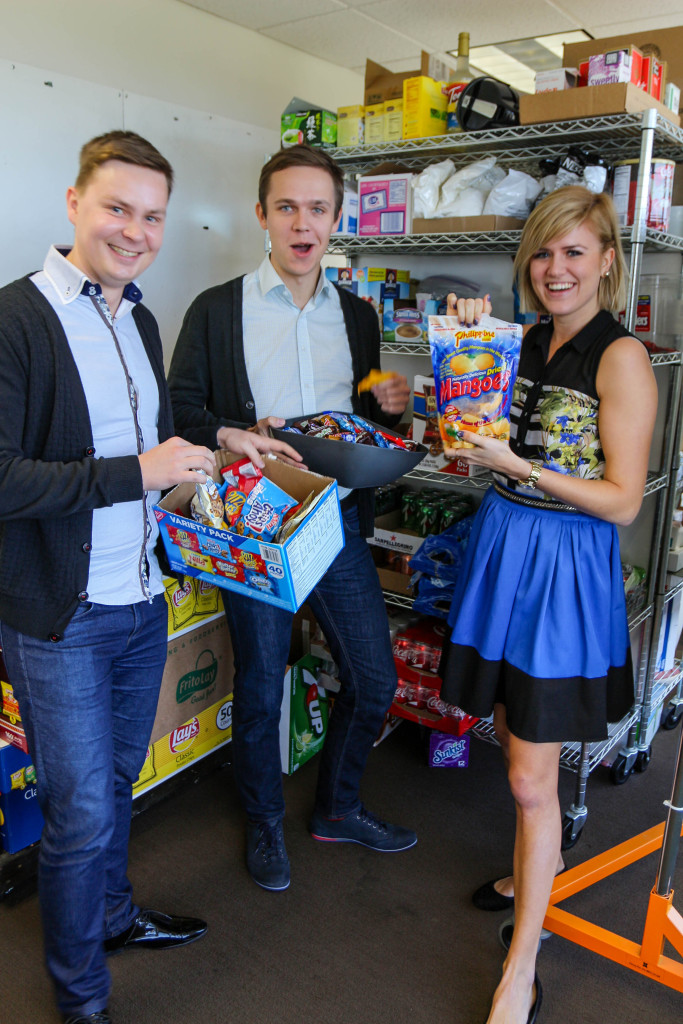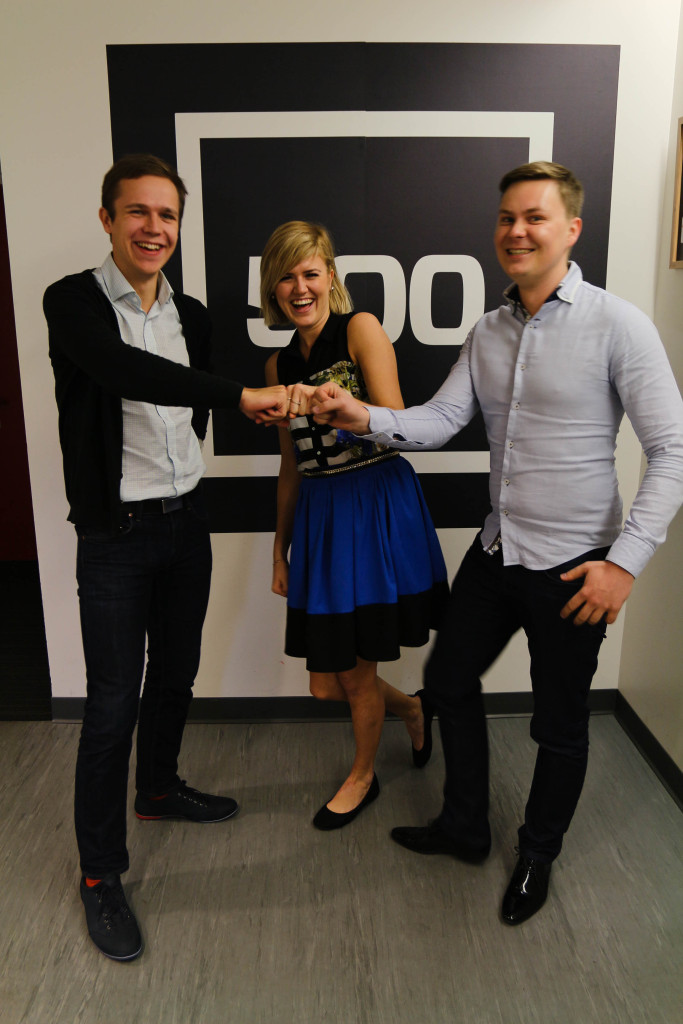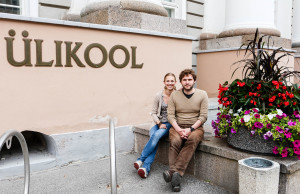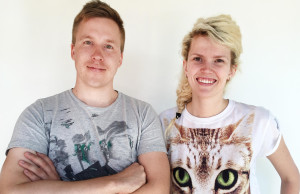TV advertising wizards

As the fourth Estonian startup to make it to the 500 Startups accelerator, ResultsOnAir is bound to make a difference in TV advertising industry.
Kristel Tuul, Kristo Peterson and Cristo Pajust, or “the three Krises” as they call themselves, enthusiastically greet me in their new office on the top floor of the tallest building in Mountain View that indeed does give one a great view of the Foothills that surround Santa Clara Valley – more commonly known as Silicon Valley – from every angle. One obviously deserves these inspirational vistas in return for making it to one of the best known startup accelerators in Silicon Valley, 500 Startups.
Besides the fact that they are obviously very driven and know all too well what they want to achieve and how to do it, it makes a lot of sense that ResultsOnAir was selected from among thousands of applicants to be among the 28 startups, 61% of whom are of non-US backgrounds, to the 13th batch of 500 Startups, the founder of which, Dave McClure, infamously coined the term #estonianmafia.
According to a story from 2011 that has almost become an urban legend, Martin Henk and Timo Rein from yet another Estonian star startup, Pipedrive, and Dave McClure were standing in front of Angelpad accelerator in San Francisco and discussing Estonian startups. There was a question about a founder and the Estonian guys wanted to make sure if the person in question was from Erply or Zerply, both of which are among 500 Startups alumni. That lead McClure to post the infamous tweet: “OH estonian founder in SF: “did u mean @Erply or @Zerply ?” #EstonianMafia”.
The hashtag stuck and now #estonianmafia is something that embeds all of the characteristics of any startup that come out of the tiny Nordic country: run by no-bullshit, hardworking people who have to think out of the box and the limited physical boundaries of their home country. They are up for any challenge as there is not much to lose, and there is a lot of trust and support in the tight community because everyone knows each other so well personally. Obviously all these #estonianmafia features apply to ResultsOnAir as a team.
From my previous mail exchange with Kristel I already knew that she’s a far cry from a typical shy Estonian marketing person who “goes to work every day to aggressively wait for the next customer” as a common joke goes on Estonian sales people. Kristo and Cristo are a similarly good match, being smoothly outgoing and fast forward in their way of speaking and thinking. The three of them strike me as a perfect team with that special sparkle in their eyes and an invisible fairy dust sprinkled all over them. This is what it takes to make it on Silicon Valley entrepreneurial scene.
This is of course a very shallow and superficial statement since it’s only their first week here. But first impressions are often crucial to one’s path to success.
It must have been one of those moments in their final Skype-interview to be picked from among the thousands to make it to the final batch although it was midnight in Estonia and Kristo was in Vietnam at the time.
“This was not sheer luck that they picked us to be among the 28 teams here now,” Kristel says with a special certainty. “We worked hard to get here. As soon as we found out we were among the hundred finalists, we sprang to action and did not just sit idle.” If necessary, they made calls at 4 am just to network and reach the right people to ask for relevant advice.
Building a Dream Team
Kristel knows the importance of first impressions all too well since she has six summers of experience selling books door-to-door all over America under her belt. This might sound as something from a previous century but fits well into the pattern of Estonian startups who’ve made it in Silicon Valley – the founders of Pipedrive and Fortumo, to name a few, share a similar background in walking from door to door, politely yet persistently selling books.
“People want to buy but they do not like to be sold to,” is Kristel’s main takeaway from the sales job. “Having talked to over 30 000 people over the past summers and gotten thousands of no’s, rejection now doesn’t affect me almost at all.”
One could argue that despite her age, 25, she’s a seasoned sales person since she started working on her entrepreneurial skills already in high school, managing her own student firm called Flup that sold hand-made coffee cup sleeves through Junior Achievement Estonia program.
Back from yet another one of her book selling tours last fall, she landed in a co-working space in Tallinn, Garage48 HUB, named after the series of 48-hour startup hackathons that started in Estonia five years ago and by now have spread as far as Palestine and Kenya.
This was where Kristel met Cristo and Kristo who had formed a team after getting to know each other on a long bus ride to a Garage48 event in Belarus in April 2014.
Cristo is the most experienced person on the team with various entrepreneurial, business development and digital marketing experiences. Having studied both sociology and management he has been making good use of his skills as far (east) as Malaysia and Singapore. While living and working in Asia for a few years he joined infamous German business cloning group Rocket Internet and built a logistics firm that currently operates in more than 40 countries. He’s also no novice in America since he was in charge of bringing an Asian luxury skincare line to the US market. Being a true digital nomad, Cristo states that in the businesses he’s been running and following, it makes no difference where one is physically located because in the end of the day the execution is what makes a real difference.
Kristo, being the youngest on the team, nevertheless also has enough experience. He’s been actively involved with civil society movements in international NGOs and lead European Commission projects in the past. Lately he was building the digital analytics field to optimize marketing and IT development for (Draft) FCB, one of the largest global advertising agency networks, in its Tallinn and London offices. Working together with clients like Hyundai, Coca-Cola and many others made him see that there was a costly problem without a fix. “From what I saw every day I realized that we had the best tools for analyzing digital advertising, but they all fell short in optimizing TV campaigns,” Kristo recalls. “I had the ideas for a solution, but good execution is what really counts so I started looking for a co-founder.”
Getting the product just right
Having acquired enough insight in the world of advertising and having then accidentally met on their way to Vitebsk, Belarus, Cristo and Kristo clicked instantly and started working on their idea. By the time Kristel joined in, they had already figured out what they would want to make better in the world of advertising and received enough proof from customers to validate the need for their offer.
About 60% of the global marketing budgets are spent on TV advertising and a large slice of that goes straight to waste as it does not reach its target audience. It has been hard to measure the proportion of success to waste. That is up until now, as more and more of the advertising is concentrating on provoking the audience for some sort of direct response like going online to sign up for a trial, the so-called “call-to-action TV ads”, something that actually provides data to work on and analyze. While in the rest of the world the proportion of the call-to-action ads is still only around 10-20%, in the US it ranks to almost half of all the TV commercials.
As is the risk with any other type of big data: whoever starts collecting it tends to drown in the abundance of it. This is what ResultsOnAir wants to change.
“ResultsOnAir provides web analytics-level insights for direct response TV (DRTV) campaigns. We help advertisers and media agencies increase return on investment (ROI) on their TV ad dollars up to 40%. By tracking how an audience takes action we optimize ad buying and increase conversions,” Cristo summarizes what they do. “When the ad has been aired, we measure the direct impact based on how the viewers reacted in a matter of a second. This usually helps our customers get their TV budgets more effective.” Creating the connection between ads and results allows them to give advice on what TV ads bring best results.
Potential customers, both the ad agencies and also customers directly in charge of a brand, obviously tend to be very doubtful in the beginning, wondering why should they need yet another middleman in the already complicated process.
ResultsOnAir team has experienced this a lot. But living up to their name – as soon as they have shown the results, for example a bracket ranging from 3 to 180 dollars for a company to obtain a new customer, the advertisers become convinced that they can target the timing of being on air much more precisely in order to get more value for each dollar they spend. Prime time with their over the top prices might not always be the best timing to air the ads. On the contrary, depending on the brand this could be the most useful advice ResultsOnAir would give: avoid prime time as it is too expensive and the actual results might not reflect the desired goals at all, as long the money spent and the returns on it is concerned.
Of course it is not a solution that anyone would need or could afford. “The monthly budget of TV advertising should be at least 30,000 (either dollars or euros as it’s almost the same rate now anyway). Below that we usually can’t help as there isn’t enough data available nor enough skin in the game for all the parties,” claims Kristo, noting that the longer a client works with them, the more predictable results they can convey.
Call to action
Most of their prospective clients represent industries like finance, telecoms, insurance, holidays and e-commerce. In order to attract new customers the startup that wants to make a revolution in the world of advertising paradoxically tries traditional sales techniques like referrals, leads or just plain cold-calling.
“It’s usually much faster to approach a potential client itself than going through an agency,” Kristel tells me. “But at the same time an agency already has a bunch of customers, so if you manage to convince them, you could land a number of clients at once.”
To get a new client on board, ResultsOnAir would first recommend a trial campaign. “Once they have tried that, there is no turning back,” claims Cristo.
The same applies to the team too. Coming from Estonia where the value of marketing budgets in the whole country is 180 million euros, the US market with its 7 billion sales is a challenge worth taking on. If it was up to them, all of the great ads shown during the event of the year by all TV viewers in the US, the Super Bowl, would be endorsing a lot more call-to-action ads.
They have already realized that everything is four times bigger in the US: the people, the portions of food, the bills… “Coming from Estonia this may all seems too much but one needs to be ready to take on the challenge. It is a great chance to learn as perspectives are very different. We will make sure to take full advantage of our time here.”
Being among the 500 Startups means getting a 100 000 dollar investment but also giving away 7% stake of of the company. The accelerator offers an ongoing program but eventually it’s up to the startups what they want to do and who to meet while in the accelerator. There is just one deadline: August 11th when everyone needs to pitch their startups on a demo day.
“We want to introduce ourselves to our potential customers and investors, but also keep in touch with the existing clients,” is ResultsOnAir’s agenda for the upcoming months. They will keep developing their fully automated system because the clients want to actually “see” a product although that might not actually reflect on the results. “We tend to follow the idea of a lean startup – there is no point in spending all the money and building a product up front.”
“It’s quite likely that they will employ a pivot (a term coined by the author of “The Lean Startup”, Eric Ries, used to describe a method for developing businesses and products by changing direction) and take off with a new idea,” says Andrus Viirg, a representative of Enterprise Estonia to Silicon Valley, who has seen his fair share of Estonian startups in the Valley. “How to pivot seems to be the way of mentoring at 500 Startups,” Viirg notes, bringing an example of yet another Estonian startup to come out of the accelerator, Import2, an online data migration service that helps businesses move data between cloud apps.
The team replied: “Based on current feedback from our paying customers we see that we’re delivering enough value and don’t see the immediate need to change our idea or product”.

